Five Movie Commentaries To Listen To In December 2016
For the past year, editor in chief Peter Sciretta has been asking me to write about my favorite audio commentaries. If I ever recommend one to him, he asks about the list. Compiling a list of only a few must-hear audio commentaries sounded like too much of a challenge. There's far too many I haven't heard yet, so writing some "best commentary list" didn't feel right. I have a lengthy list of commentary tracks I intend on listening to, and the plan is to write about a few of them — at least the good ones — around the start of every month.
These first five recommendations feature insights from Martin Scorsese, Robert Zemeckis, J.J. Abrams, Tom Ford, Penelope Spheeris, and many others. Below, check out our movie commentary recommendations.
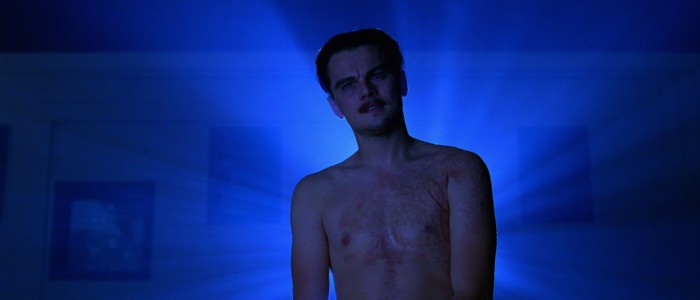 The Aviator (featuring director Martin Scorsese, editor Thelma Schoonmaker, and producer Michael Mann)Why Listen: Because you learn the MPAA sequence is partially based on Martin Scorsese's own meetings with the rating board, most notably his experience with them on Casino, according to Schoonmaker. Scorsese's longtime editor often dominates the track, providing excellent insight into the making of the film, her approach and Scorsese's. Typically, for example, Scorsese and the actors he often collaborates with tend to build and work towards the right take — but that wasn't the case with Cate Blanchett. She nails it in the first take.
The Aviator (featuring director Martin Scorsese, editor Thelma Schoonmaker, and producer Michael Mann)Why Listen: Because you learn the MPAA sequence is partially based on Martin Scorsese's own meetings with the rating board, most notably his experience with them on Casino, according to Schoonmaker. Scorsese's longtime editor often dominates the track, providing excellent insight into the making of the film, her approach and Scorsese's. Typically, for example, Scorsese and the actors he often collaborates with tend to build and work towards the right take — but that wasn't the case with Cate Blanchett. She nails it in the first take.
Scorsese — a big fan of Sam Raimi's The Gift — sometimes discusses history more than filmmaking in his commentaries, which isn't a problem at all. Scorsese and Mann are extremely knowledgeable about Howard Hughes and frequently discuss details only hinted at or played beneath the surface in the film. Scorsese also offers up plenty of film recommendations, naming the movies he showed the cast and crew. Scorsese generally provides great film and world history lessons in his tracks, and The Aviator is no exception in that regard.
What's Said: Schoonmaker chose not to research Howard Hughes until after her job was done. "I didn't want to sit and constantly think, 'Oh, I read in a book details about that scene I wish were in the film,'" she says. "I didn't want that to bother me. I wanted to see the film evolve on the screen in dailies with Marty, not be worrying all the time about what I read in a book somewhere. In fact, I'm reading about Howard Hughes now. Of course, I learned a lot about Howard Hughes during the making of the film, but I'm learning all the details about his life now instead of at the beginning because I didn't want it to interfere with my perception of the film. Now, there's been other films...Kundun, for example, I had to learn about Tibetan religion, in order to know how to edit the movie."A Day on the Job: The nightmarish screening room sequence was originally much longer. They worked "like crazy" in the editing to show the long passage of time without taking up too much of the runtime, but even on the set, this surreal portion of the drama that "displays the obsessive compulsive disorder in a full-blown way" was one of the biggest challenges for Scorsese. They cut five days worth of "intense shooting days" in the editing room.
"This [scene] represents a series of breakdowns he had during that period," Scorsese says. "I wanted to give the impression of what it was like to be him in that room, meaning images would come up, flashing lights, these things that are being projected on the screen — scenes from Hell's Angels apparently, scenes from desert footage he took from The Outlaw, and scenes from The Outlaw. At a certain point, is that real footage up on the screen? The footage at the end being projected on his back, in color, of Hell's Angels. First of it all...it was not shot in color; it's representing his agony." The crew would sometimes stretch the screening room and alter the space, to create a sense of distortion and unease.
Trivia: Schoonmaker was nervous about the split-screen scene, featuring Hughes and Noah (John C. Reilly) talking on the phone. She believes split-screen can often "reduce the impact of both images when you have two of them together."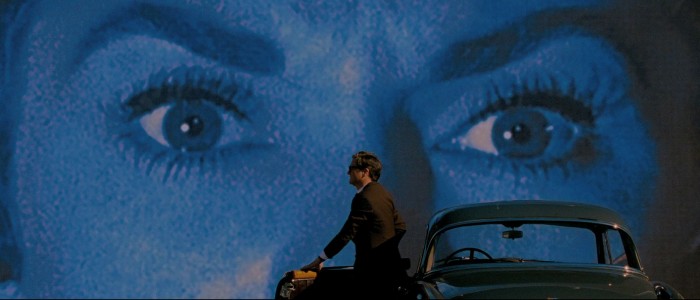 A Single Man (featuring writer/director Tom Ford)Why Listen: Tom Ford speaks with brevity, eloquence, and passion. The fashion icon can talk at such a brisk pace without ever having to chase a thought. He's as meticulous with his words as he is with his compositions, color choices, and research. Research is huge for Ford. The suit George wears and the gun he uses ("I chose the most beautiful one, of course," the director half-kids.) are informed by details found in Ford's research. If you're interested in Ford on a personal level, he's remarkably open during his commentary, sharing many wonderful and sometimes tragic personal details that informed his adaptation of Christopher Isherwood's novel. Ford's commentary provides an entertaining glimpse into his process and views on life.What's Said: "George's suit, when we had it made, I sewed a Savile Row label in it with his initials, as one would get when they bought their suit on Savile Row, and a date I had calculated might've been the last time George had been in England. There are all these things that you don't necessarily see but I believe that one feels, and certainly the actors feel them. It helps them really feel they're inhabiting a role and a world. I think it helps the world not look flat, and not look like a film, and really feel like a real place in time."A Day on the Job: The first exchange between George and Jim (Matthew Goode) in black-and-white was Ford's first day on set as a director. "It was the one and only time in the entire process I was nervous because I had never shouted the word 'cut' before," he explains, "and it was important for me to take control and look like I knew what I was doing. This was my first film, my first day, and my very first shot."Trivia: The scene where George brings up the idea of taking mescaline and shaving off an eyebrow is an idea taken from Ford's life. "I had once upon a time taken mescaline [with writer and poet Stephen Spender] and shaved off my eyebrow," he says. "I was a young actor at the time, so I couldn't work for about six weeks. I had to wear a bandage over where my eyebrow was."
A Single Man (featuring writer/director Tom Ford)Why Listen: Tom Ford speaks with brevity, eloquence, and passion. The fashion icon can talk at such a brisk pace without ever having to chase a thought. He's as meticulous with his words as he is with his compositions, color choices, and research. Research is huge for Ford. The suit George wears and the gun he uses ("I chose the most beautiful one, of course," the director half-kids.) are informed by details found in Ford's research. If you're interested in Ford on a personal level, he's remarkably open during his commentary, sharing many wonderful and sometimes tragic personal details that informed his adaptation of Christopher Isherwood's novel. Ford's commentary provides an entertaining glimpse into his process and views on life.What's Said: "George's suit, when we had it made, I sewed a Savile Row label in it with his initials, as one would get when they bought their suit on Savile Row, and a date I had calculated might've been the last time George had been in England. There are all these things that you don't necessarily see but I believe that one feels, and certainly the actors feel them. It helps them really feel they're inhabiting a role and a world. I think it helps the world not look flat, and not look like a film, and really feel like a real place in time."A Day on the Job: The first exchange between George and Jim (Matthew Goode) in black-and-white was Ford's first day on set as a director. "It was the one and only time in the entire process I was nervous because I had never shouted the word 'cut' before," he explains, "and it was important for me to take control and look like I knew what I was doing. This was my first film, my first day, and my very first shot."Trivia: The scene where George brings up the idea of taking mescaline and shaving off an eyebrow is an idea taken from Ford's life. "I had once upon a time taken mescaline [with writer and poet Stephen Spender] and shaved off my eyebrow," he says. "I was a young actor at the time, so I couldn't work for about six weeks. I had to wear a bandage over where my eyebrow was."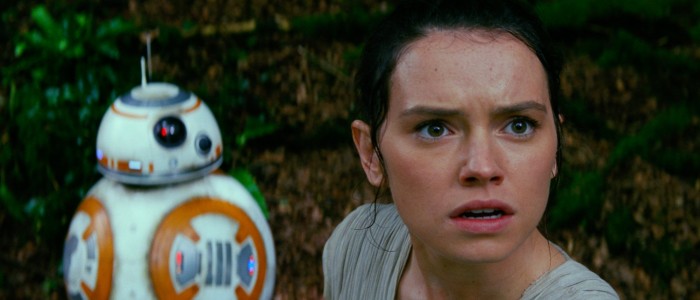 Star Wars: The Force Awakens (featuring co-writer/director J.J. Abrams)Why Listen: J.J. Abrams' commentaries are as fast-paced as his movies. The director typically tends to cover all the bases, from the nitty-gritty technical details, story development, themes, how the characters grew, and more. With each scene Abrams unloads a ton of memorable anecdotes, like how they worked around Harrison Ford's injury, a scrapped idea of Rey envisioning Luke and Darth Vader battling, how Maz is based on Abrams' high school English teacher, and the surprising amount of scenes that greatly benefited from reshoots. Abrams also discusses some valuable notes he received from some trusted friends and collaborators. It was producer Bryan Burke who thought of Rey calling the Millennium Falcon "garbage" before it was revealed.What's Said: Sometimes the simplest scenes, like Rey and Han in the cockpit after the rathtar chase scene, are the toughest to shoot for Abrams. "There's a very weird thing that happens, where there's a scene I think is going to be really hard, but it typically goes surprisingly smoothly," he says. "When I think a scene is really easy, it's a bear, just really hard to get through, and that was the case with these scenes in the cockpit. We kept changing lines and working on things to get the rhythm better."A Day on the Job: Not too long after shooting Rey and Finn's meeting, Abrams realized their relationship needed to change. At first, there was tension between the two characters, but the director wanted their relationship to be more fun and sweet. "When we first started shooting, we hadn't figured out the proper dynamic between Finn and Rey," Abrams says. "It was much more contentious. In this first scene, where they come together, it just didn't work, and that was what we shot originally in Abu Dhabi. We ended up reshooting their entire first conversation. While all this [the action] is happening practically in Abu Dhabi, including when she hits him with the staff, that's Abu Dhabi. All her shots here [close-up of Rey] were done back at Pinewood [Studios] in an interior set to match. Originally, they were much angrier at each other, and truthfully, it wasn't working."Trivia: Abrams forgot to include BB-8 in the rathtar sequence, so he used a shot of the character from another scene for the divisive set piece.
Star Wars: The Force Awakens (featuring co-writer/director J.J. Abrams)Why Listen: J.J. Abrams' commentaries are as fast-paced as his movies. The director typically tends to cover all the bases, from the nitty-gritty technical details, story development, themes, how the characters grew, and more. With each scene Abrams unloads a ton of memorable anecdotes, like how they worked around Harrison Ford's injury, a scrapped idea of Rey envisioning Luke and Darth Vader battling, how Maz is based on Abrams' high school English teacher, and the surprising amount of scenes that greatly benefited from reshoots. Abrams also discusses some valuable notes he received from some trusted friends and collaborators. It was producer Bryan Burke who thought of Rey calling the Millennium Falcon "garbage" before it was revealed.What's Said: Sometimes the simplest scenes, like Rey and Han in the cockpit after the rathtar chase scene, are the toughest to shoot for Abrams. "There's a very weird thing that happens, where there's a scene I think is going to be really hard, but it typically goes surprisingly smoothly," he says. "When I think a scene is really easy, it's a bear, just really hard to get through, and that was the case with these scenes in the cockpit. We kept changing lines and working on things to get the rhythm better."A Day on the Job: Not too long after shooting Rey and Finn's meeting, Abrams realized their relationship needed to change. At first, there was tension between the two characters, but the director wanted their relationship to be more fun and sweet. "When we first started shooting, we hadn't figured out the proper dynamic between Finn and Rey," Abrams says. "It was much more contentious. In this first scene, where they come together, it just didn't work, and that was what we shot originally in Abu Dhabi. We ended up reshooting their entire first conversation. While all this [the action] is happening practically in Abu Dhabi, including when she hits him with the staff, that's Abu Dhabi. All her shots here [close-up of Rey] were done back at Pinewood [Studios] in an interior set to match. Originally, they were much angrier at each other, and truthfully, it wasn't working."Trivia: Abrams forgot to include BB-8 in the rathtar sequence, so he used a shot of the character from another scene for the divisive set piece.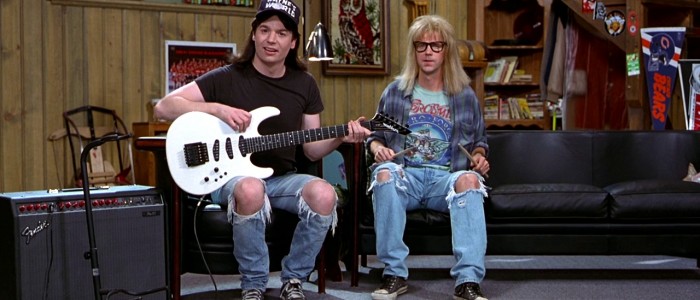 Wayne's World (featuring director Penelope Spheeris)Why Listen: The funniest and most candid track on this list. This commentary was recorded years after the film's release, which, in most cases, tends to mean there's more honesty and perspective. Looking at Wayne's World years later, Spheeris can't help but notice how slowly cut she thinks her picture is compared to today's comedies. She says she'd shoot it and cut it much faster now, but she's still incredibly proud of the movie. While the director usually made comedies to pay for her docs, she clearly loves these characters and this world of "headbanger metal dudes," a music scene she understood better than Mike Myers and Dana Carvey. In case you don't know, Spheeris is the director that turned down This Is Spinal Tap because "she loved the music so much she couldn't make fun of it."
Wayne's World (featuring director Penelope Spheeris)Why Listen: The funniest and most candid track on this list. This commentary was recorded years after the film's release, which, in most cases, tends to mean there's more honesty and perspective. Looking at Wayne's World years later, Spheeris can't help but notice how slowly cut she thinks her picture is compared to today's comedies. She says she'd shoot it and cut it much faster now, but she's still incredibly proud of the movie. While the director usually made comedies to pay for her docs, she clearly loves these characters and this world of "headbanger metal dudes," a music scene she understood better than Mike Myers and Dana Carvey. In case you don't know, Spheeris is the director that turned down This Is Spinal Tap because "she loved the music so much she couldn't make fun of it."
Every great Wayne's World joke or moment Spheeris remembers exactly how it was crafted. She'll even discuss disagreements over jokes, like how she didn't want to shoot the "way too over-the-top." It's also heartwarming and saddening to hear the director lovingly remember Chris Farley. The security guard's exaggerated arm movements? Farley's idea.
What's Said: "When I was at UCLA, women didn't even consider being film directors," Spheeris says. "I thought, if I get a job editing educational movies, and be able to make a living and take care of my daughter, then I'd be very fortunate. You know, you didn't dare say, as a woman, 'I'm going to be a film director.' I mean, we're talking 1969 or 1970. I remember the first time I filled out a bank form, where it said occupation, I was really scared and looking around, going, 'Is anybody going to see this?' I wrote down 'film director,' real privately. I was like, 'Wow. I did it [Laughs].'"A Day on the Job: Spheeris doesn't like to waste time, which sometimes can happen when too much time is spent focusing on the "little crap." "When I walked in the door over at Paramount, they were fixating on the look of the piece," she says. "They were like, 'Oh, we gotta make a whole world for him, it's gotta be bigger than life.' I'm listening to all this stuff, going, 'What the hell are you guys talking about? Just pick the damn street, pick the damn car, dress'm up and let's rock.' When you're nervous about doing the show, because it's so much responsibility, you, like, fixate on little crap that doesn't matter. For weeks and weeks and weeks I stacked a room with pictures of neighborhoods Mike had to look at it to figure out what neighborhood would be his neighborhood. Finally, I just decided I'm going to get some place close to my house. Screw it. It didn't matter. Once we started shooting, it was a dopey-looking house on a dopey-looking street."Trivia: Spheeris directed the "Dreamweaver" music video.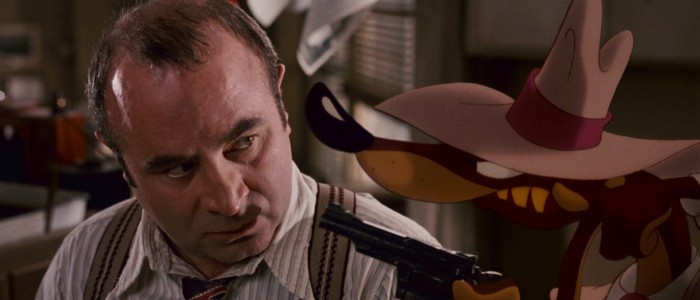 Who Framed Roger Rabbit (featuring director Robert Zemeckis, producer Frank Marshall, screenwriters Jeffrey Price and Peter S. Seaman, associate producer Steve Starkey, and visual effects supervisor Ken Ralston)Why Listen: Who Framed Roger Rabbit was a long shoot. After many months of shooting and over a full year of post, the four commentators got to spend a lot of time together on the most expensive movie made at the time of its production. They all became genuine friends during that time, which is evident as they spend a lot of time giggling through this commentary, just loving what they were able to get away with, some of the technical feats they pulled off, and how the movie sometimes freaked out a new regime at Disney. If you want to learn about the "Toon mythology," some big story changes (Baby Herman was at one point the villain), and the problem people had with the drinking in the film (especially after the first test screening), listen to this commentary.What's Said: Zemeckis spent a year in post-production unable to use different takes or shots, due to the complicated nature of the hand-drawn animation. Needless to say, Marshall was impressed by the director. "I think the most amazing feat in this is in what Bob did: he had this movie in his mind for those three years," the producer says. "He was able to cut the movie at least a year in advance, and then stick with that cut. Having been through the directorial thing, I know you want to change things constantly. You're always seeing new ways to cut a scene, etc. When you have to stay with not only the cut of the scene but each individual take that's in that cut, it's an amazing thing. For him to keep that together in his head, then have to direct actors for eight months, and then direct animators for another year, which is just like [working with] actors, that's the amazing thing to me."A Day on the Job: Steven Spielberg gave some terrific notes on Who Framed Roger Rabbit, like the idea of having Eddie Valiant and Roger having one personal chat, which ended up being the movie theater scene. He also gave screenwriters Peter S. Seaman and Jeffrey Price another superb recommendation one day. "This is where we have to describe the probate and the will, and it was really dry and everything. We were joking around, and Steven Spielberg was in the office with us," Price recalls, "and he said, 'Yeah, you gotta explain that probate, so people understand it.' That's when we said, 'Yeah, probate! My uncle Thumper used to take pills for his probate.' [Eddie goes] 'Prostate, you idiot!' We were just joking around, and Steven goes, "No, you gotta put that in the movie!'"Trivia: An unnamed company wanted to pay $100,000 to have Roger drink their brand. When Zemeckis brought up the fact the drink makes the rabbit go berzerk in the movie, they didn't care.
Who Framed Roger Rabbit (featuring director Robert Zemeckis, producer Frank Marshall, screenwriters Jeffrey Price and Peter S. Seaman, associate producer Steve Starkey, and visual effects supervisor Ken Ralston)Why Listen: Who Framed Roger Rabbit was a long shoot. After many months of shooting and over a full year of post, the four commentators got to spend a lot of time together on the most expensive movie made at the time of its production. They all became genuine friends during that time, which is evident as they spend a lot of time giggling through this commentary, just loving what they were able to get away with, some of the technical feats they pulled off, and how the movie sometimes freaked out a new regime at Disney. If you want to learn about the "Toon mythology," some big story changes (Baby Herman was at one point the villain), and the problem people had with the drinking in the film (especially after the first test screening), listen to this commentary.What's Said: Zemeckis spent a year in post-production unable to use different takes or shots, due to the complicated nature of the hand-drawn animation. Needless to say, Marshall was impressed by the director. "I think the most amazing feat in this is in what Bob did: he had this movie in his mind for those three years," the producer says. "He was able to cut the movie at least a year in advance, and then stick with that cut. Having been through the directorial thing, I know you want to change things constantly. You're always seeing new ways to cut a scene, etc. When you have to stay with not only the cut of the scene but each individual take that's in that cut, it's an amazing thing. For him to keep that together in his head, then have to direct actors for eight months, and then direct animators for another year, which is just like [working with] actors, that's the amazing thing to me."A Day on the Job: Steven Spielberg gave some terrific notes on Who Framed Roger Rabbit, like the idea of having Eddie Valiant and Roger having one personal chat, which ended up being the movie theater scene. He also gave screenwriters Peter S. Seaman and Jeffrey Price another superb recommendation one day. "This is where we have to describe the probate and the will, and it was really dry and everything. We were joking around, and Steven Spielberg was in the office with us," Price recalls, "and he said, 'Yeah, you gotta explain that probate, so people understand it.' That's when we said, 'Yeah, probate! My uncle Thumper used to take pills for his probate.' [Eddie goes] 'Prostate, you idiot!' We were just joking around, and Steven goes, "No, you gotta put that in the movie!'"Trivia: An unnamed company wanted to pay $100,000 to have Roger drink their brand. When Zemeckis brought up the fact the drink makes the rabbit go berzerk in the movie, they didn't care.
